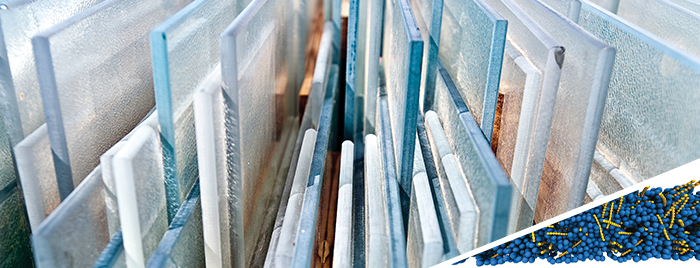One of the grand challenges in materials science is discovering exactly how materials form glasses.
David Simmons, Ph.D., an assistant professor in the University of Akron’s Department of Polymer Engineering is trying to understand at the fundamental level the relationship between the molecular structure and the way a material forms a glass.
“There’s a big-picture fundamental challenge in polymers, and in a lot of other materials, which is the question of how these materials solidify through a process known as the glass transition,” Simmons said. “This is a process in which they go from a melt or liquid to a solid without crystallizing. So unlike a metal or a diamond, they don’t have this beautiful lattice structure on the molecular side - they look disordered and yet they seem solid.”
After 50 or even 100 years of studying this problem, it’s still not understood why this happens. Using the Glenn Cluster at the Ohio Supercomputer Center to perform a massive number of simulations, Simmons’ project “Tuning glass formation with molecular additives” aimed at gaining understanding into this age-old question.
“What this project focuses on is how can we rationally and efficiently choose a molecule we can introduce to a polymer to widen its use range,” Simmons said. “Imagine you’re making some massive amount of a polymer and it softens at 80 degrees Celsius and you want to use it for some application, like cooking, at a higher temperature. How do you do that?”
The choices include either the very expensive path of making a new polymer, or modifying what’s already there to get it to stay solid at a higher temperature while keeping it processable.
“The purpose of this project is to use computer simulations to understand how we go about designing molecules to add to a polymer to tune its properties so we can use it for more applications without dramatically increasing the cost,” Simmons said.
Simmons’ project required simulating 50 to 100 different temperatures using a software called Large-Scale Atomic/Molecular Massively Parallel Simulator (LAMMPS) with each simulation based on a different time scale.
“We’re doing multiple replicas for statistics and then we might be doing 50 or 100 different molecular structures so we can learn trends,” Simmons said. “So we do tens of thousands or hundreds of thousands of simulations so it becomes necessary to have access to large-scale supercomputing resources.”
###
Written by Ross Bishoff
Project Lead: David Simmons, Ph.D., University of Akron
Research Title: Tuning glass formation with molecular additives
Funding Source: Keck Foundation, National Science Foundation Division of Materials Research
Website: blogs.uakron.edu/simmonsgroup

